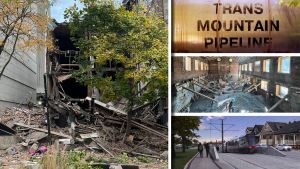As the use of new and emerging green building technologies continues to grow, so will the need for a skilled workforce to design and install these systems properly.
In a session called The Human Side of New Technology at the Canada Green Building Council’s (CaGBC) recent Building Lasting Change conference, panellists discussed how workforce capacity issues can impact the implementation of green building technology.
“Emerging technologies will be a focus of the building industry over the next while as we pursue low carbon buildings,” said moderator Jeffrey Ranson, senior associate at CaGBC.
He said the industry knows how to achieve low carbon building and currently the workforce is extremely fragmented with some gaps in terms of either skills or representation in the sectors.
“The capacity for the workforce to implement the technology is perhaps constrained regionally because of the variations in perhaps policy framework in different areas and the different business models that operate in those different regions,” said Jeff Hunter, founder of Evolved Thermal Energy and vice-president of the Ontario Geothermal Association.
“In more urban settings we’ve seen business model innovation, energy as a service provider really spur a lot of growth in the large commercial sector so much so that they are pushing in a lot of new demand.”
While there are some shifts happening, the design and construction workforces need to work together.
“There are some firms out there that really stand out and get ahead of it and walk outside their comfort zone and get involved in these geoexchange projects, but I think a large portion of the marketplace…operate in their comfort zone and may not venture to the fringe in geothermal and push those limits,” said Hunter. “There are experts in the geoexchange industry. They are tuned to helping designers move into that world, providing the geothermal specific expertise.”
In terms of mass timber and the wood industry, there are issues when it comes to supply chains and manufacturing as well as labour, said Peter Moonen, national sustainability manager with the Canadian Wood Council.
“We’ve got many architects and engineers who are becoming increasingly competent and in many cases going beyond what we expected, so there is a tremendous capacity and ability,” said Moonen.
“The productivity side is an area of concern not just for construction companies but for manufacturing companies. With mass timber the key that we’re finding is if you’ve got a person who knows how to design it and a person who knows how to manufacture it but nobody knows how to install it or how to install the other trades that are embedded in a building — electrical, mechanical, plumbing, envelope, windows — then you can run into problems.”
Ehab Naim Ibrahim, research and development manager with Gamma North America and president of the Ontario Building Envelope Council, said it’s important for everyone working on these projects to seek further accreditation in building physics.
“As much as it can be taught in school, we see that it’s really lacking. Therefore we do encourage even the professionals and the design industry come and seek further accreditation for sustainability and for future building envelope requirements,” said Ibrahim. “The labour is available and it can also be scaled up with programs…if the contractors are seeking further knowledge, but the actual labour force…are not exactly the ones who are coming to us and having the building science specialist designations. They need to be trained.”
Reed Kelterborn, national education manager with the Canadian Wood Council, said one of the issues is out of all the accredited civil engineering programs in Canada about a third of them don’t offer any wood design curriculum for students.
“That’s part of the systematic problem we saw in architecture and construction management programs as well,” said Kelterborn. “We’ve been focused on talking with industry and design professionals about what skillset, what expertise new grads need to enter the workforce…so when the students enter the workforce they are exposed to what is happening in the industry. We need to make that content widely and freely available.”
Moonen said accreditation for any trade should be consistent across the country which is difficult when you’ve got provincial training authorities and accreditation boards.
“When you couple that with inconsistent training or education in universities or colleges for the skills that the trades may need that’s a bit of a hurdle,” he said.
“What we want to do is have consistency by the construction profession that says, ‘OK these programs give people a certain level of competency’ and when you couple that with onsite accumulation of hours then you’ve got people who can get the equivalent of a Red Seal or Gold Seal that is consistent and meets the needs of the construction sector.”
Follow the author on Twitter @DCN_Angela.











Recent Comments
comments for this post are closed